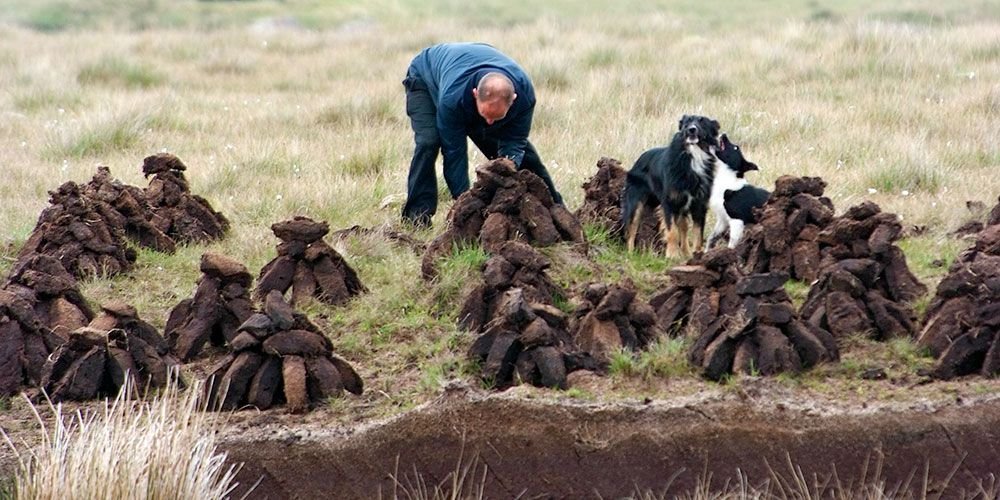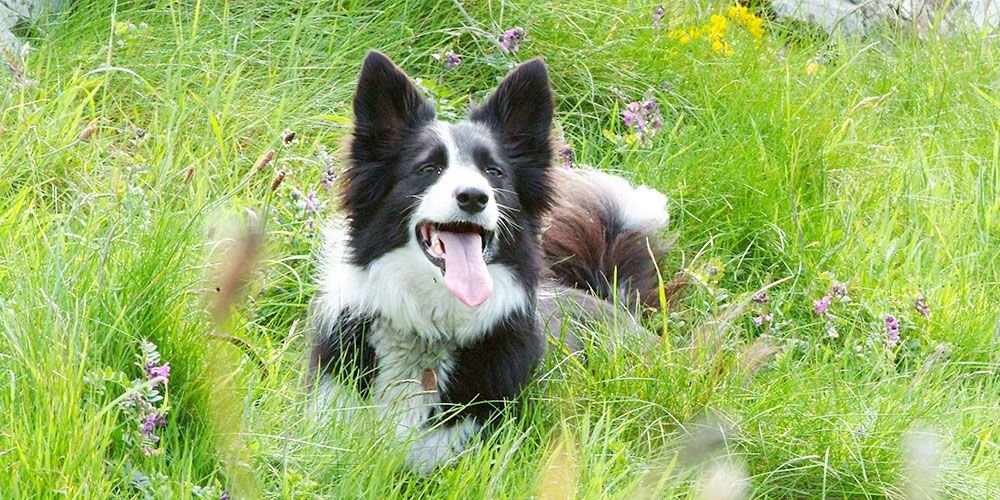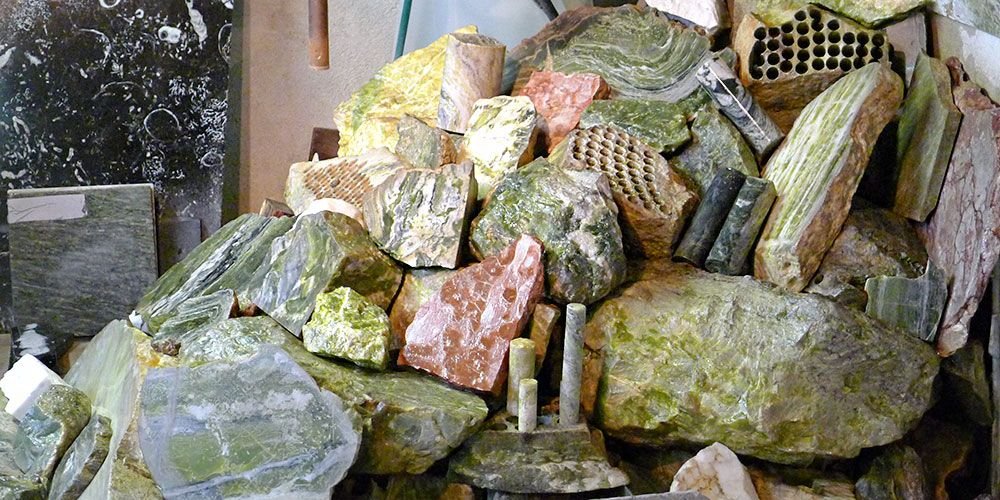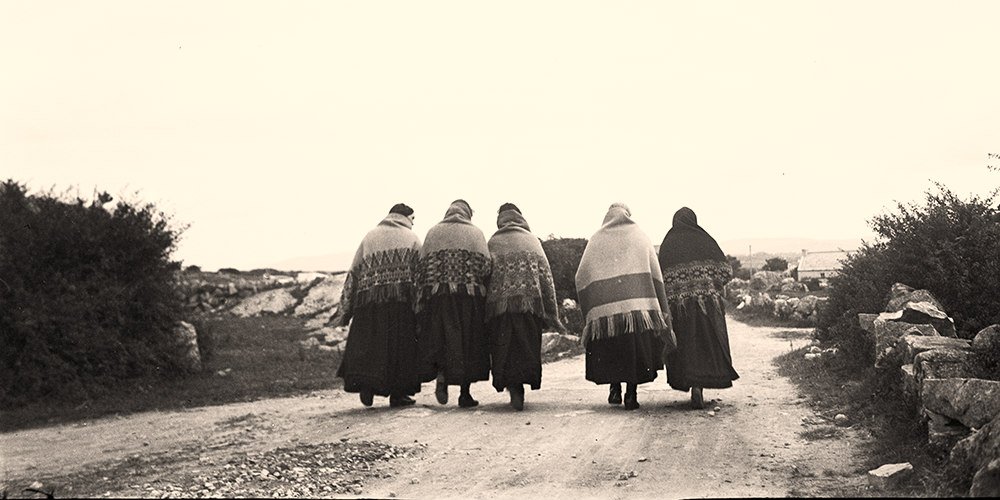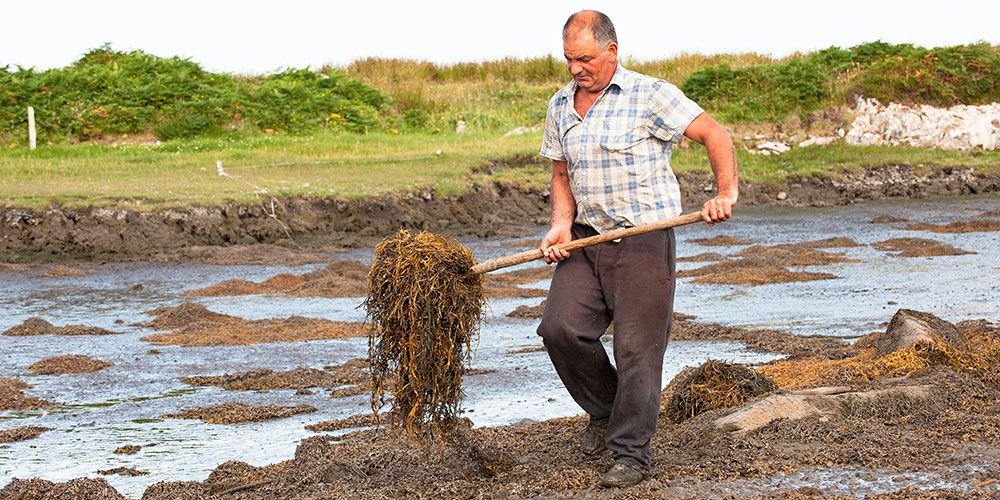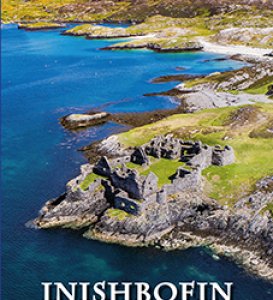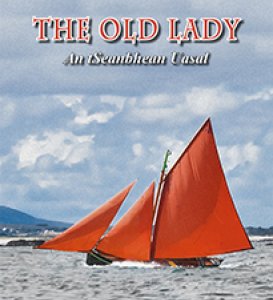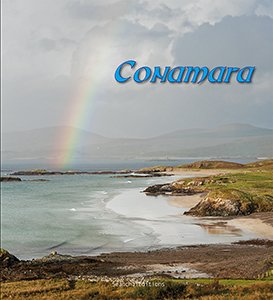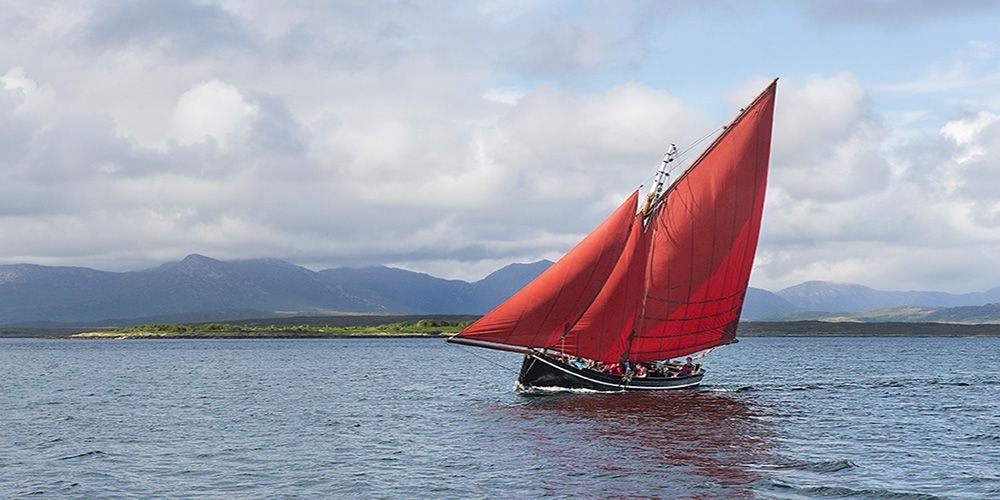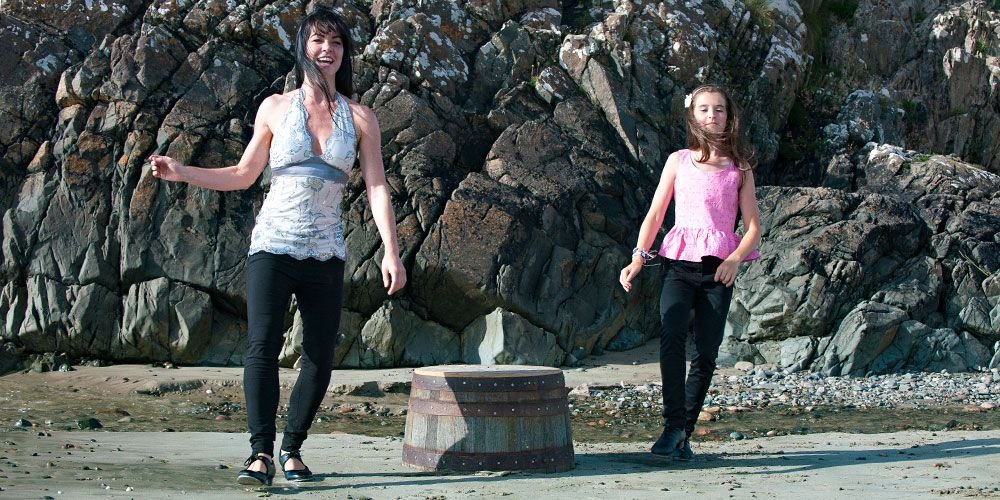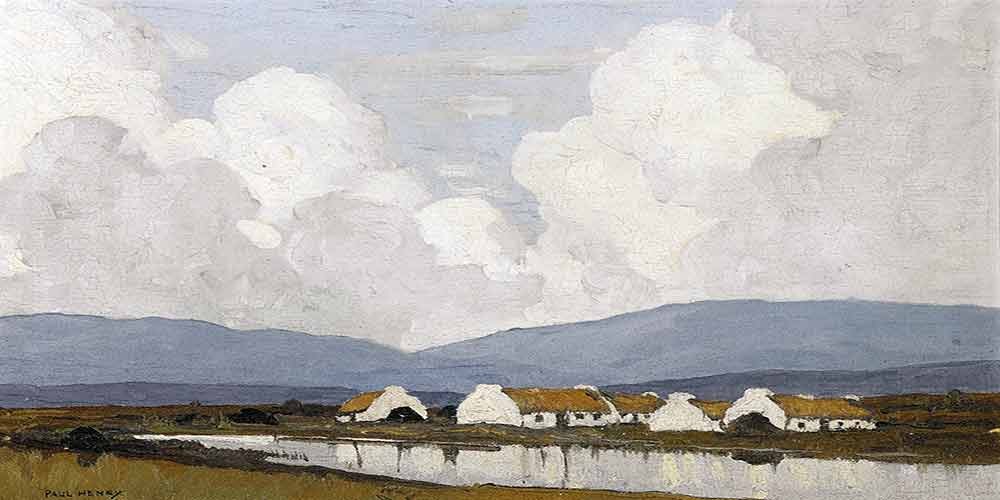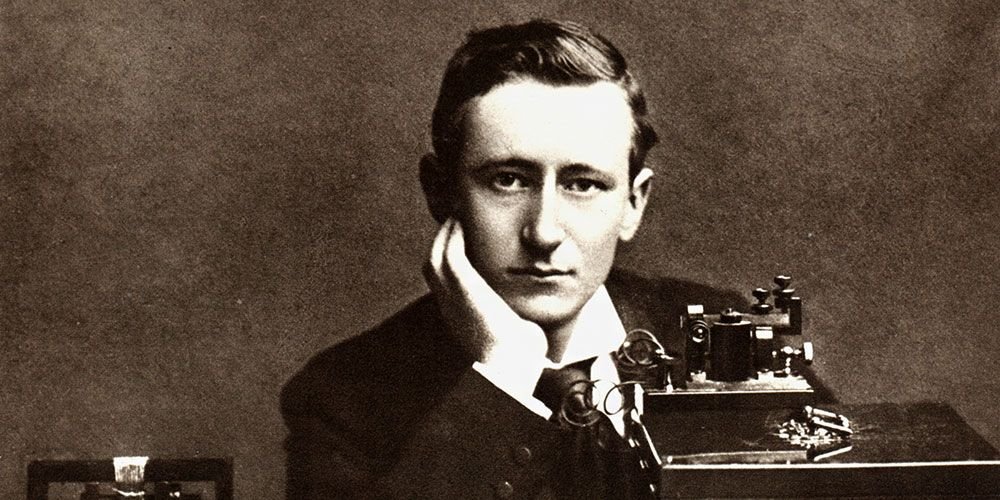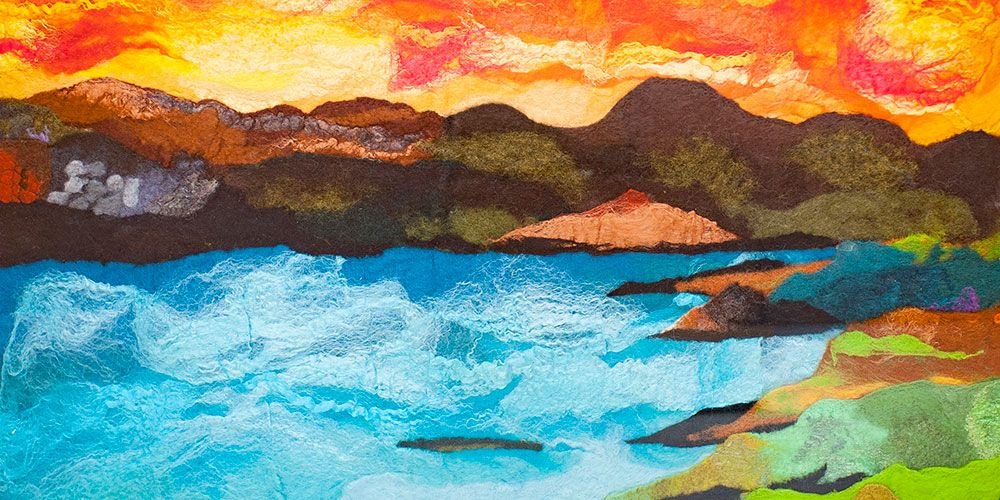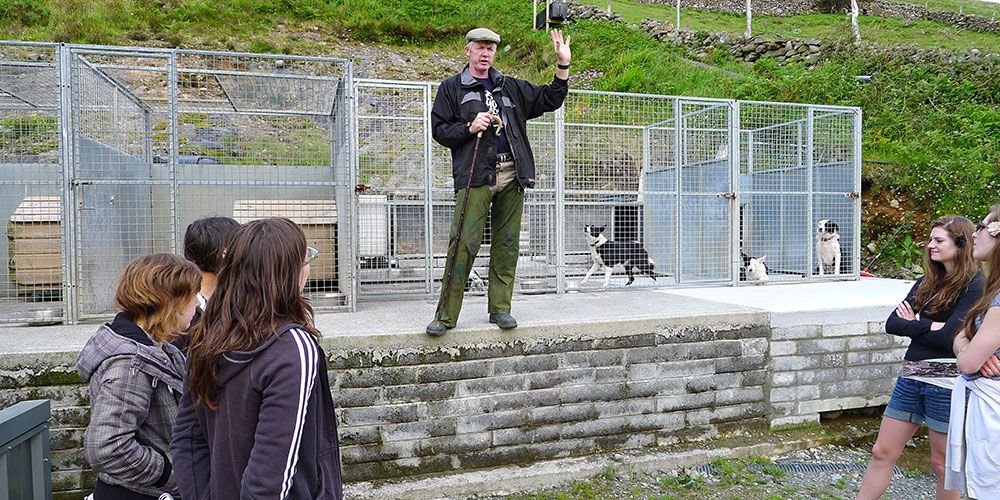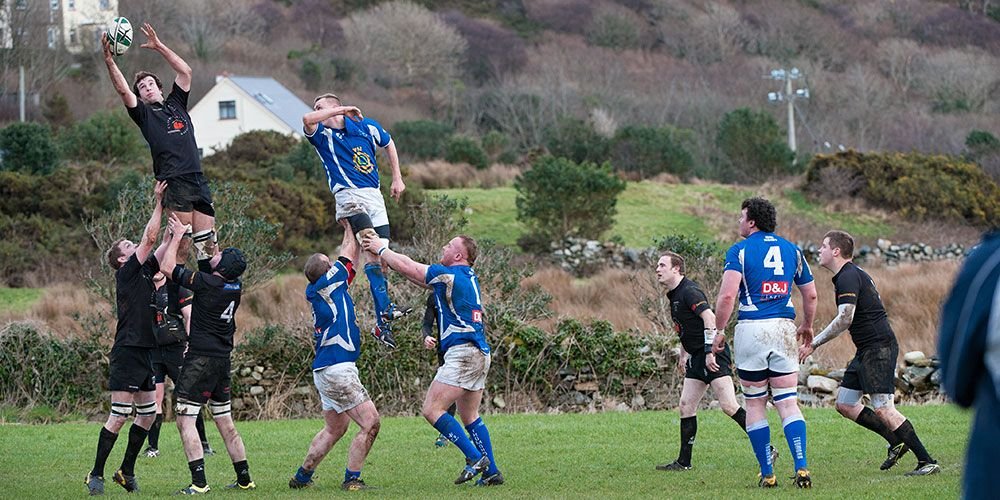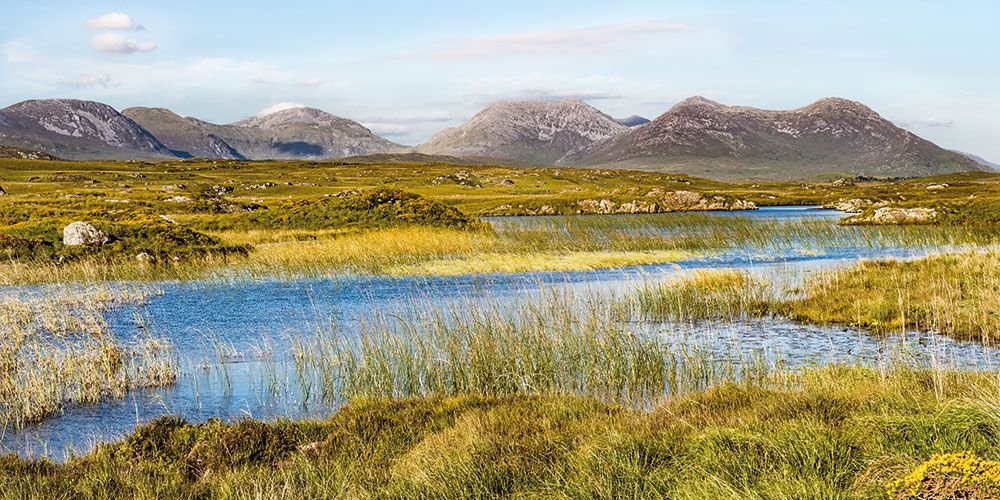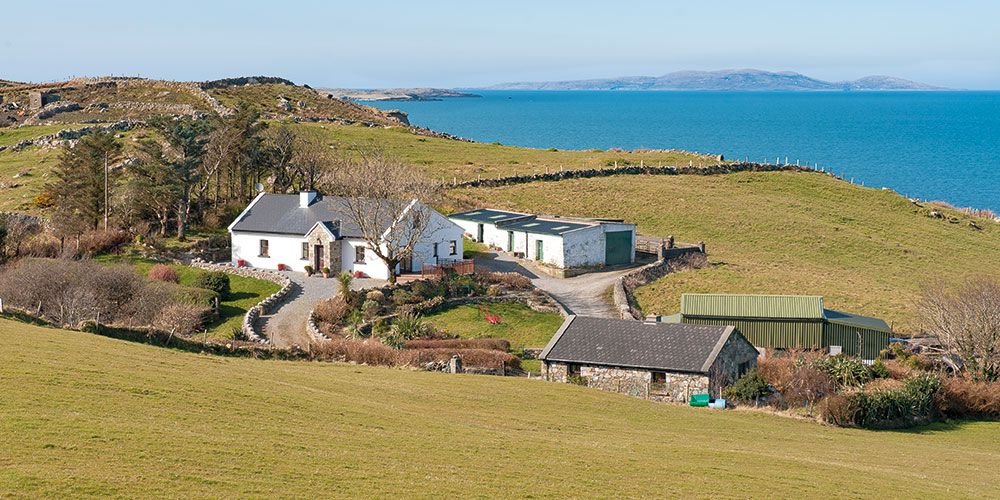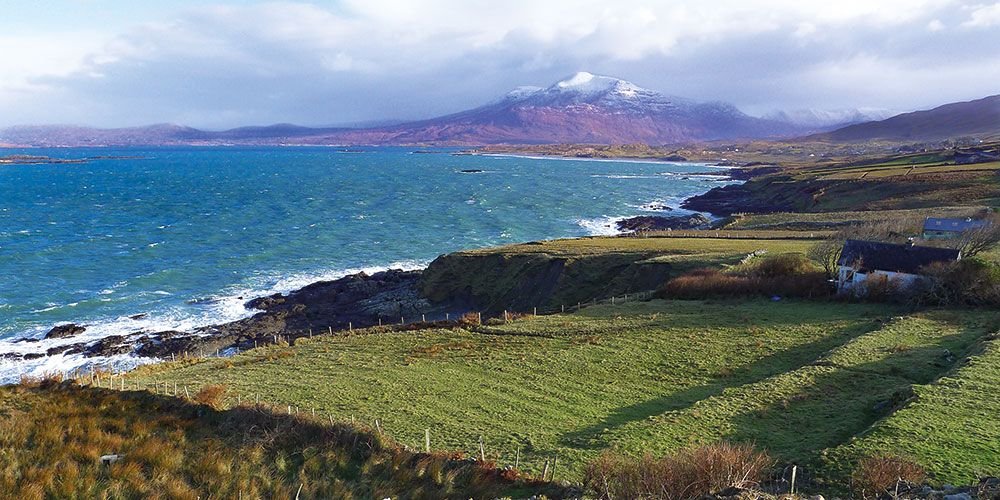Touring Ireland your nose will certainly be stricken by a very persistent and widespread scent, absolutely distinctive and unique: it's turf, the fuel most widely used around the country, mainly because Ireland actually lies on a bog for most of its territorial extent. Pleasure or pain for tourists...
Looking at the green fields of Connemara dotted with sheep, cows, and horses in peaceful though crowded coexistence, one wonders how it is possible to gather all these animals when there is a need to: the solution is to rely on a widespread breed of dogs, i.e. the Border Collie. This breed of shephe...
The green gold of Connemara: this is the name given by the locals to the marble of Connemara, a variety whose origins date back to the Precambrian, about 600 million years ago. This marble is a very ancient one, extremely resistant to scratches and stains: this characteristic makes it suitable for m...
Though known as Galway Shawl (Seál na Gaillimhe in Irish) these heavy garments, worn by the women all over Ireland, were designed and manufactured in Paisley, Scotland. They were then shipped to the Galway Woollen Mills which added the fringe (scóga).
The pattern of the shawl and the way to...
Pat Mhichael Ó Cualáin is a master boatbuilder. His boatyard is in Carraroe, a stone's throw away An Sruthán pier. Here he works with his brother-in-law Micheál Staif Mc Donnacha. Though they are opponents on race days, they share their skills in building winning Galway Hookers, like Naomh...
Walking along the beautiful beaches of Connemara it is easy to meet large rounded rocks quite covered with a carpet of soft (and frankly a bit smelly ... ) seaweeds of the genus Ascophyllum nodosum, commonly called knotted wrack. In past centuries the shrewdness of local farmers exploited the econ...
A photographic tour of Inishbofin, an island located more or less 10 km.off the coast of North Connemara. A truly hidden gem, this little island has a lot to offer to visitors: crystal blue waters, interesting walks in an unspoilt country, magnificent views of the surrounding sea and mountains and...
May a boat have a soul? Four generations of an Irish family, the McDonaghs, firmly believe it.
The Old Lady tells the poignant story of an iconic Galway hooker and her owners: Braendán, Seán, Pádraig and Conor. For them all the Old Lady represents their choice of a free, independent life, drive...
The Galway Hooker (húicéir in Irish) is a traditional boat distinctive to Galway Bay and the coast of Connemara. This iconic craft, sturdy, yet elegant and agile, is characterised by a black-coloured hull (the colour was originally due to a tar coating) and rust-red sails.
The Galway hooker has...
Sometimes words are not enough to fully evoke the beauty of a landscape, the strong community bonds among the people who inhabit it, the traditions that make it alive and challenging, constantly evolving and yet firmly rooted in the past. For this reason at Seanchaí Editions we prefer relying on the...
The Plot
Ireland, 1930 - Bull McCabe is an aged, but the vigorous peasant and the tenant of a field that he and his family have made fertile and cultivated with enormous sacrifices. When the owner of the land decided to put it on sale, Bull's offerings are largely beaten by that of an American of...
The Galway Hooker (húicéir in Irish) is a traditional boat distinctive to Galway Bay and Connemara coasts. This beautiful craft, sturdy and yet elegant and agile, has now become an accepted icon of the cultural heritage of Connemara. Specially developed to sail in the insidious waters of rugged Co...
The Plot
Sean Thornton (John Wayne), an ex-boxer who has left the ring after causing the accidental death of his opponent, returns from America to his native Ireland to buy the house where he lived as a child, to soothe with a quiet life the remorse that haunts him. Sean falls in love with Mary K...
When talking about the typical Irish cottage, one immediately thinks of those whitewashed, small buildings with a thatched roof, the front door divided into two and turf smoke coming out of the chimney in lazy spirals, spreading the typical scent all around ... a picture of warmth and coziness, sure...
The term Sean nós means "old style" and indicates both a traditional singing and a dance, typically performed in western Ireland. These artistic expressions are "minimalist", that is, it's possible to perform them without musical accompaniment, or also on a musical background played by a few instr...
Touring in the West of Ireland, it happens very often to see driving directions, car number plates and signboards of shops written in a completely different language from English and that has little to do with it: the Irish Gaelic. The Article 8 of Irish Constitution states that this is the national...
Either people interested in history and traditional architecture or lovers of nature and landscapes can't miss a visit to Dan O'Hara Heritage Centre, approximately 8 km. from Clifden on the N59 leading to Galway. The center is well equipped and offers a tour by foot or on board of a picturesque wa...
The beautiful scenery of Connemara has been a source of inspiration to many artists from the late 19th century on, such as Paul Henry, the great Irish painter who has beautifully depicted in his works the charming wilderness of this region. Actually, this area well represented a part of the country...
The Great Famine: causes and effects of a tragedy
The Great Famine - an Gorta Mór - that affected Ireland between 1845 and 1852 wiped out about one million inhabitants and it almost led to emigration 1,750.000 people, causing social, economic and political upheaval whose consequences are still fel...
Not many people know that Guglielmo Marconi (1874-1937), the distinguished Italian scientist who invented the radio, actually had strong links with Ireland. In fact, his mother Annie was one of four daughters of Andrew Jameson of Wexford, the well-known and wealthy owner of the homonymous whiskey...
The beautiful landscapes and the charming atmosphere of Connemara have always been a source of inspiration for artists: it is no coincidence that some great painters of the past, such as Paul Henry, produced memorable works while living in this area. This article presents the works of Mo, Bernie and...
If you are wandering along the banks of lovely Lough Na Fooey - in the heart of Joyce 's Country - do not miss a visit to "Croeso" Border Collie breeding farm. Here Joe Joyce, a sheep and sheepdog breeder, trains his dogs for the hard tasks awaiting them up in the hills. During summer months, from...
On the shores of beautiful Lake Na Fooey are located the house and the workshop of Joe Hogan, a skilled craftsman specialized in the creation of willow baskets. A native of Ballinasloe, Joe started his activity in 1977, taking advantage of the natural growth of willows in the fields surrounding th...
The vocation for rugby in Connemara dates back to the '20s when some workers of the Marconi station at Clifden played this sport in their spare time. Many young men in the area, formed from a hard life which required a tough and sturdy constitution, became players in the teams of the most prestigi...
Wildlife Nature is all around you in the Connemara: easily accessible mountain trails, long beaches to stroll along, lake shores on which to linger, watching the solemn and regal movements of the swans, brown bogs made multi-coloured by the blossoming of flowers with incredible colours ....
Pleas...
The link between Connemara and water is very deep: the whole region is crossed by more or less consistent little rivers, whose waters have generally the colour of turf (and they also taste the same... just give 'em a try!). As for the lakes, the area is dotted and lined with mirrors of different siz...
Climbing the mountains of Connemara can be considered as an easy task by mountaineers accustomed to more challenging peaks: being ancient geological formations of quartzite, the average height of these peaks is about 700-800 meters, with the only exception of Mount Gable (1370 mt.), which separate...
Connemara covers an area of 192,144 hectares of land and the population, essentially a rural community, is equal to 30,000 people, with a density of one inhabitant per 6.5 hectares (Scannell 1984). The Atlantic climate causes a high level of rainfall, with peaks of 2500 mm per year in the mountainou...
Although a large statue located in Recess depicts Connemara as a thoughtful bearded giant, in my opinion, it resembles more a wild horse, a beautiful and indomitable thoroughbred, changeable in its moods and its state of mind. The reason lies in the extreme variability of the landscape, the sky, and...
Contrary to what is often wrongly thought, Connemara is not a county, but a geographical area in the west of Ireland (more precisely, in the County Galway); its extension roughly goes from Lough Corrib to the shores of the ocean. It is traditionally divided into North and South Connemara, the bounda...

